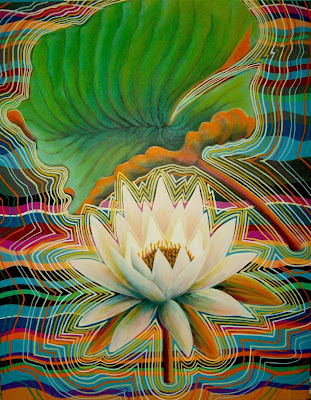Restorative Yin Yoga Sequences, 12 Parts
I: Part 1, Parts 1--4
To get a sense of a Restorative-Yin Process: Not just poses but rather what one brings to the poses...A Sketch
Part 1, Poses 1-4 of 12
Slowly, with intent to hold poses comfortably vs. move fast, and make sure that there is no pain if you want flexibility gain. Pain for gain is more for stability and it is the heart of vinyasa flow and this is not vinyasa flow. When uncomfortable, always, always back off (not folding or stretching as far). Follow the body vs. force the body, gradually note little gains in bending and reaching as nerve bundles in muscles and facia release, and enjoy the little graces you find there. The yoga pose does not have to be static or frozen, allow the pose to open.
Flex gain requires muscle and fascia release. Muscles and ligaments have a beginning and end point of attachment and so they cannot stretch much more. Flexibility is controlled by nerves that restrict stretch, and when we try to stretch muscles, micro-nerve bundles fire and we feel discomfort. By going softly, nerve bundles are not triggered and do not fire. Overtime, we can bend with little or no discomfort. Such flexibility is not simply a flexible body. This approach can improve overall flow in the body, even in soft tissue such as the lymphatic system as well as improve brain and endocrine function that regulate body processes.
Restorative-yin is about flexibility, modifying neuro-endocrine chemistry that over repeated practice sessions can make us less reactive to stressors. Mechanically, selected poses bring particular attention to lower back/lumbar and pelvic girdle and shoulders/posture. Overall, be smarter than a human and stretch like a cat that knows how to not hurt itself; listen to the body.
Use cushions/blocks for support, soft mat (“pilates-like mat” or even thicker), music, fragrance, blankets for cover when it seems feasible for you. Support is not cheating. It is what you should do to be able to relax and become more flexible. Flexibility that can make you aspire to eventually look like a “knot” can become a problematic obsession. It is enough to improve flexibility that helps you function, so that a more realistic practice is one that helps improve everyday functionality. The goal here is more of an optimal health and a more comfortable path to get there.
Seated or lying down, perhaps with blankets:
First Excellence: centering and opening/expanding
Breath
perhaps bring attention to breath, just as it is. With slight open lips, sense cool breath entering and warm breath exiting. Notice freshness washing awareness. Follow the breath, as it is, rather than intentionally breath. Perhaps 20,000 breaths per day with little attention, bringing attention to the imminent breath. Perhaps a gatha--in breath: “freshness”; out-breath: “releasing.”
perhaps breathing into belly, into diaphragm, into chest, then exhaling from belly, then diaphragm, the chest
perhaps attend to the exhale, allowing the breath to completely empty. Now or soon, await the return of the breath in this space of “perfect;y peaceful pause.”
Perhaps note the reduction of breaths per minute from perhaps 15 to 6 or 4 breaths with no drop in percentage of oxidation.
Second Excellence: perhaps allow some intention for today’s practice to emerge rather than setting an intention. Allow this intention to occur now or later.
Balasana--On your knees and folding forward, a little of B.1 (knees together) and B.2 (knees split): breath into belly to massage now-compressed organs as well as support the back (noting with breath-in, a little more comfort than breath-out), soften shoulders; if not comfortable when folding forward, put head on double fists or a block, then reach arms out forward for a Virasana fold to stretch lats and gradually reach further as lats release
Counter: sit up in Virasana (still on knees), place hands on floor behind back with fingers facing toward body to stabilize elbows and bend spine inward; pull shoulders back to open chest then pulse shoulders into a hunch to open muscles in upper back, repeat a few times.
Kneeling Down Dog--come up to knees, lower chest toward mat and extend arms (if needed use block or cushion under upper chest above breasts for relaxing support that allows more gradual opening than forcing the pose); then change the pose slightly by stretching both extended arms out to one side angle and then shift to the other side angle to turn spine, repeat both sides.
Malasana--come up to a squat and press hands together in front and make spine erect; then reach both hands out on the floor in front while maintaining upright postion, and gradually move the hands into the floor between the feet stretching the spine further outward; then in an erect squat, turn right raised hand out to one side using left hand on floor for support, shift to turn other raised hand out to the other side, gently twisting the vertical spine, repeat slowly to stretch muscle on lower chest sides. If it is not comfortable to sink deeply enough to make spine vertically erect, then tilt chest forward and overtime as flex improves go for more verticality. If there are knee problems that seem to make this pose difficult, skip this pose for now.
OPTION HERE: Having completed malasana, you can flow into Uttanasana (standing forward fold). Note that the “utt” in standing and seated forward folds means ‘intense,’ and if you straighten your legs you will feel the intensity in your hamstrings in your back
